Week9 Blog (2) | collective Exploring Spring – Flower Theme Exhibition Sharing

⚪️Exploring Spring – Flower-themed exhibition sharing
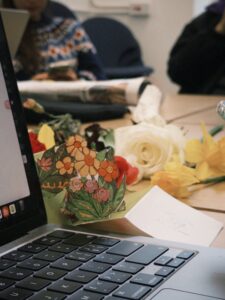
Flowers brought by team members at the meeting
Time: March 17, 2025
Location: Summer Hall
Participants: Group 4
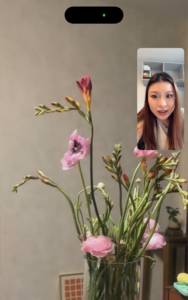
Screen capture of my video call with my mother
I am the planner of this meeting theme. The reason for planning this theme is that when I was on a video call with my mother in China, she showed me the lisianthus at home. The flower language is hope and blessing, warmth and family. Although my mother and I are thousands of miles apart, I still feel the warmth of home and my mother’s expectations of me through the flowers on the screen. Moreover, it is March, the early spring in the UK, and the flowers on the meadows are blooming one by one. So I proposed that the theme of this week’s meeting is related to the flower-themed exhibition of artists and curators, and invited each team member to bring a flower to the meeting.
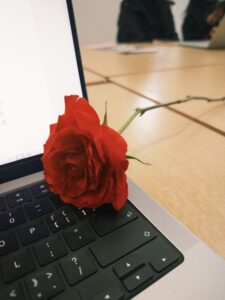
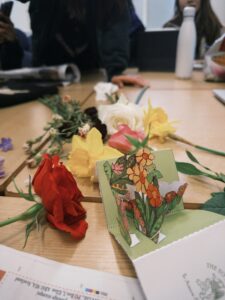
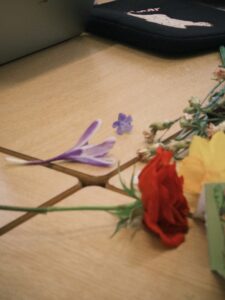
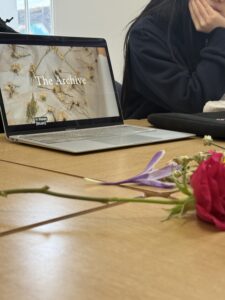
⚪️What I shared
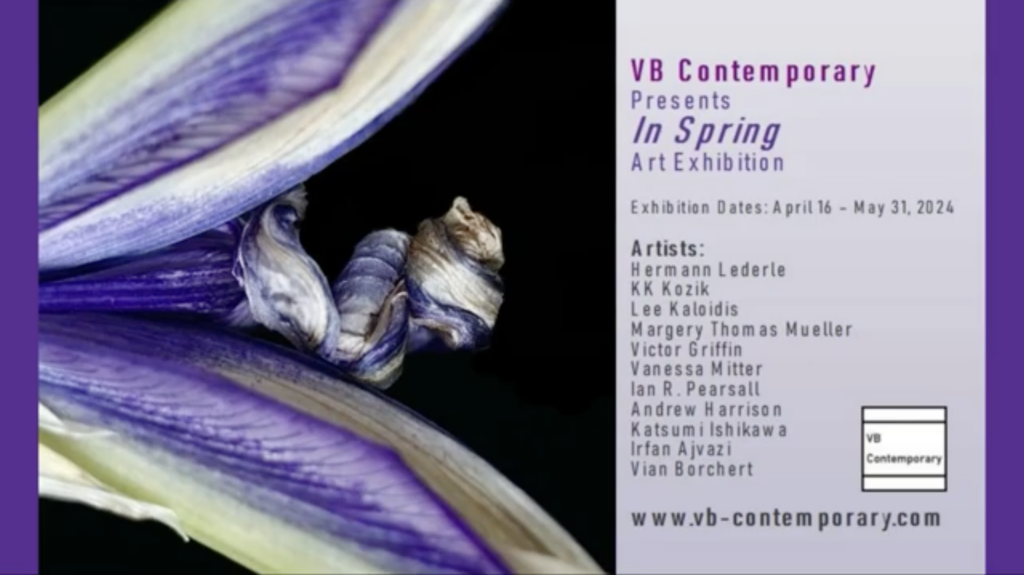
The exhibition I shared is the “IN Spring” art exhibition
https://www.vb-contemporary.com/exhibition-page-in-spring-2024.html
Exhibition Introduction:
“IN Spring” is the second virtual group exhibition curated by VB Contemporary, which aims to invite artists from all over the world to create works related to the theme of spring. The exhibition encourages artists to think about the emotions of spring and the influence of nature. The works can be concrete spring scenes or abstract expressions of the concepts of rebirth and spring renewal. The exhibition is diverse in form, covering paintings, sculptures, installations and photography, etc., showing the vitality and changes of spring.
⚪️ Summary
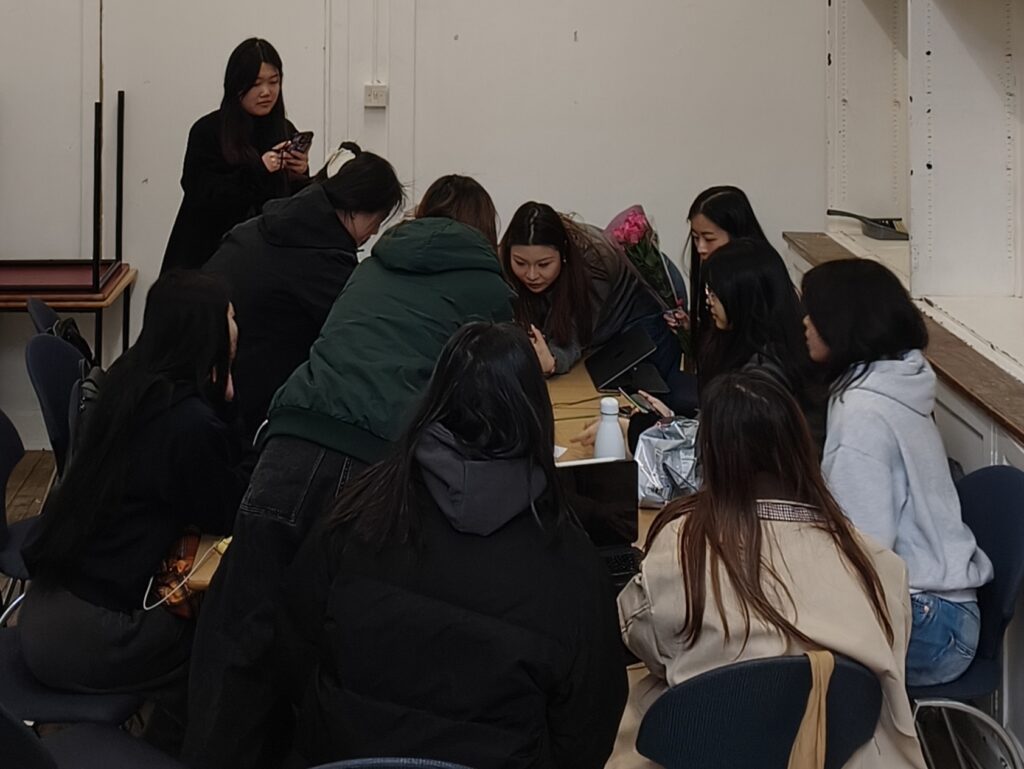
Active participation of team members.
Exploring recent spring and flower-themed exhibitions has revealed how these motifs go beyond seasonal aesthetics—they serve as powerful curatorial tools. Spring’s associations with renewal and emotional vitality align with Nicolas Bourriaud’s Relational Aesthetics, where “art is a state of encounter” (Bourriaud, 2002, p.18), positioning the exhibition as a space for shared experience.
In the sharing cases of other group members also highlight ecological themes—soil, growth, decay—encouraging reflection on sustainability. This echoes Félix Guattari’s belief that art should contribute to shaping ecological awareness and ethical environments (Guattari, 2000).
Finally, the use of interactive and sensory media reflects Claire Bishop’s idea of participatory art, where meaning is produced through the relationship between artist, audience, and context (Bishop, 2012). These curatorial choices invite viewers not just to observe, but to feel, engage, and co-create.
References
Bishop, C. (2012). Artificial hells: Participatory art and the politics of spectatorship. Verso.
Bourriaud, N. (2002). Relational aesthetics. Les Presses du Réel.
Guattari, F. (2000). The three ecologies (I. Pindar & P. Sutton, Trans.). Athlone Press. (Original work published 1989)




Dear Jiamin,
Your blog documents your weekly curatorial research and reflections, demonstrating strong engagement with sensory and interactive exhibitions, feminist theory, and experimental curatorial methods. Early entries focus on inspirations from Ryuichi Sakamoto’s immersive sound installations and Nalini Malani’s layered video projections, both of which influenced your interest in sound as a multisensory political tool. Lectures by Fran Cottell and Adam Lewis Jacob provided insights into spatial intervention, curatorial vulnerability, and the sustainability of artist-run spaces, which later shaped your approach to constructing Echoes of Silence.
Additionally, your exhibition visits, including Portia Zvavahera’s works, deepened your understanding of symbolism, personal narratives, and feminist aesthetics, while feminist readings (Audre Lorde, bell hooks, and “Bodies of Sound”) shaped your exploration of feminist listening and the power of sound to challenge patriarchy. Your blog reflects a clear progression from research to curatorial decision-making. Below is my review of your curatorial project:
1. Strengths of the Project
1.1. Strong Conceptual Framework
The exhibition is firmly grounded in feminist theory and sound studies, using sound to highlight the silencing of women. Structuring the narrative around birth, adolescence, and marriage makes it accessible and emotionally engaging (Bishop, 2012).
1.2. Innovative Use of Sound
Applying Pauline Oliveros’ Deep Listening (2005), the exhibition creates an immersive and participatory sound experience. The ASMR-inspired installations in the adolescence section effectively engage bodily perception and memory.
1.3. Thoughtful Curatorial Space
Selecting Listen Gallery in Glasgow is strategic, as its focus on intersectional feminism and sound experimentation aligns with the exhibition’s themes. Integrating space and concept enhances the exhibition’s contextual impact (Doherty, 2009).
2. Areas for Improvement
2.1. Expanding Audience Participation Beyond Listening
The exhibition already incorporates multimedia elements such as dance and electronic music, along with a resting area in the menstrual shame section, simulating the relationship between the body and sound. These elements enhance immersion, but there is still room for improvement.
Suggestions:
Increase dynamic interaction: Currently, the multimedia scenes rely on electronic music, dance, and visuals, but the audience remains in a spectating role. The exhibition could invite visitors to engage physically in certain areas, such as.
Using motion-sensing technology to trigger different sound fragments based on audience movement, making their bodies part of the sound experience.
Allowing visitors to record their voices or write about their own experiences in the menstrual shame section, creating a visitor-generated sound archive that expands the representation of women’s experiences.
2.2. Strengthening Ethical Considerations in Trauma Representation
The exhibition deals with deeply personal and social trauma, particularly the experiences of Chinese women trapped in patriarchal family structures. A clearer trauma-informed curatorial strategy would be beneficial.
Suggestions:
Create reflection spaces where visitors can process emotions and receive psychological support.
Include content warnings at key points in the exhibition to ensure visitors are aware of potentially distressing material. Jill Bennett, in Empathic Vision: Affect, Trauma, and Contemporary Art (Bennett, 2005), emphasizes that the ethical representation of trauma requires balancing impact with audience care.
2.3. Expanding the Exhibition’s Social and Political Scope
The exhibition effectively critiques patriarchy within the family, but it could go further by examining broader social and political structures.
Economic factors: How do poverty, inheritance laws, and women’s labor value contribute to gender inequality in the family?
Legal structures: How do national policies shape gender power dynamics within families?
Media representation: How do films, advertisements, and cultural narratives reinforce or challenge traditional female roles?
Incorporating intersectional perspectives—such as the experiences of LGBTQ+ women and migrant women—could further deepen the exhibition’s critical discourse.
3. Key Reflection Questions
3.1. Strengthening the Feminist Framework
· How can the exhibition address broader social, economic, and cultural factors beyond family structures?
· Does it incorporate diverse perspectives across race, class, and gender identity?
3.2. Enhancing Audience Interaction
· How can visitors shift from passive listeners to active participants?
· Could visitor-generated audio or discussions enhance engagement?
3.3. Expanding the Target Audience
The exhibition mainly appeals to audiences already interested in feminist topics, but it could aim for a broader reach.
How can men engage with and reflect on their role within patriarchal structures?
Could male voices—such as those of husbands, fathers, or brothers—be incorporated to show different perspectives?
Is there a risk that the exhibition creates an echo chamber, reaching only those who already support feminism while failing to engage a wider audience?
Conclusion
Overall, Echoes of Silence is a well-conceptualized and emotionally compelling exhibition. However, there is room to further strengthen its feminist framework, enhance audience participation, and broaden its social and political scope. I hope these suggestions help refine the exhibition, transforming it from just a listening experience into a platform for deeper social dialogue and action.
References
【1】 Bishop, C. (2012). Artificial Hells: Participatory Art and the Politics of Spectatorship. Verso.
【2】 Oliveros, P. (2005). Deep Listening: A Composer’s Sound Practice. iUniverse.
【3】 Doherty, C. (2009). Situations: Project Art and the Public Sphere. Whitechapel Gallery.
【4】 Bennett, J. (2005). Empathic Vision: Affect, Trauma, and Contemporary Art. Stanford University Press.